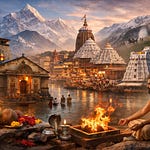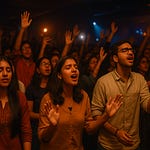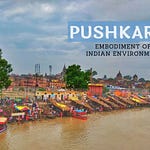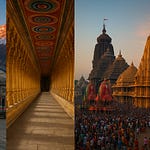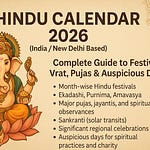History and Significance
Vrindavan, nestled along the Yamuna River in Uttar Pradesh, is revered as the childhood home of Lord Krishna. This sacred town is the setting for Krishna’s divine Leelas (pastimes) with Radha and the Gopis, symbolizing the purest form of Bhakti (devotion) and Prema (divine love). It is believed that Vrindavan still vibrates with Krishna’s spiritual presence.
Famous Temples in Vrindavan
Vrindavan is dotted with hundreds of temples, each dedicated to the worship of Lord Krishna and Radha. Here are some of the most prominent ones:
1. Banke Bihari Temple
Deity: Banke Bihari (Krishna in his mischievous form)
Significance: One of the most famous temples in Vrindavan, Banke Bihari is revered for its Swaroop (idol), which is said to have been manifested directly by Lord Krishna. The temple’s unique “Jhanki” (curtain opening) tradition adds to its mystique.
2. Prem Mandir
Built By: Jagadguru Kripalu Maharaj
Highlights: This temple is an architectural marvel built entirely of white marble, depicting scenes from Krishna Leela and Ramayana through exquisite carvings and light displays.
3. Radha Raman Temple
Established By: Gopal Bhatta Goswami (One of the Six Goswamis)
Specialty: The temple houses a self-manifested (Swayambhu) deity of Krishna, considered one of the most beautiful in Vrindavan.
4. Govind Dev Ji Temple
Built In: 1590 by Raja Man Singh of Jaipur
Architecture: The temple is an architectural blend of Hindu and Mughal styles. Originally seven stories high, the temple was partially destroyed during Aurangzeb’s reign but remains spiritually significant.
5. ISKCON Temple (Krishna Balaram Mandir)
Established By: A. C. Bhaktivedanta Swami Prabhupada (Founder of ISKCON)
Highlights: Known for its grandeur, this temple attracts thousands of international devotees and houses deities of Krishna-Balaram, Radha-Shyamsundar, and Gaura-Nitai.
6. Madan Mohan Temple
Built By: Sanatana Goswami
Significance: This temple is one of the oldest in Vrindavan and holds a deity believed to have been personally worshipped by Sanatana Goswami.
7. Sri Radha Vallabh Temple
Unique Feature: The temple emphasizes the spiritual union of Radha and Krishna. The deity of Krishna is worshipped without a separate idol of Radha, symbolizing that Radha exists in his heart.
List of Other Prominent Temples
Shahji Temple – Famous for its artistic beauty and chandeliers.
Nidhivan Temple – Believed to be the spot where Krishna performs Raas Leela every night.
Rangaji Temple – A South Indian architectural style temple dedicated to Ranganatha (Vishnu).
Gopi Nath Temple
Jugal Kishore Temple
Kesi Ghat Temple – Associated with Krishna’s victory over the demon Kesi.
Pagal Baba Temple – Known for its unique multi-story architecture.
Nearby Religious Places
Vrindavan is part of the Braj Bhoomi region, which encompasses several significant religious and spiritual sites:
1. Mathura (10 km from Vrindavan)
Significance: Birthplace of Lord Krishna (Krishna Janmabhoomi).
Key Sites:
Krishna Janmabhoomi Temple – The exact spot of Krishna’s birth.
Dwarkadhish Temple – Dedicated to Krishna in his kingly form.
2. Govardhan Hill (25 km from Vrindavan)
Legend: Krishna lifted this hill to protect the people of Braj from Indra’s wrath.
Sites:
Govardhan Puja and Parikrama (circumambulation) is a significant ritual performed by devotees.
3. Barsana (21 km from Vrindavan)
Significance: Birthplace of Radha.
Key Attractions:
Radha Rani Temple (Ladli Lal Temple) on top of a hill.
Famous for Lathmar Holi celebrations.
4. Nandgaon (12 km from Barsana)
Significance: The village of Nanda Baba, Krishna’s foster father.
Key Site: Nanda Bhavan – The house where Krishna spent his childhood.
5. Gokul (15 km from Mathura)
Significance: Krishna’s early childhood was spent in Gokul.
Key Attractions:
Chaurasi Khamba Temple (84 pillars).
Brahmand Ghat – Associated with Krishna revealing the universe in his mouth to Yashoda.
Ghats and Sacred Spots
Keshi Ghat: Krishna took a dip in the Yamuna after slaying the demon Kesi. Evening Yamuna Aarti is a mesmerizing experience.
Seva Kunj: A garden believed to be the site where Radha and Krishna performed their Raas Leela at night.
Pilgrimage Experience
Parikrama Marg: A spiritual pathway around Vrindavan, where devotees perform Parikrama (circumambulation), covering 10-12 km.
Tulsi Forests: These lush groves are believed to be inhabited by Vrinda Devi, enhancing the sacred atmosphere.
Festivals Celebrated in Vrindavan
Holi (Festival of Colors) – Vrindavan’s Holi, especially at Barsana and Nandgaon, is world-famous for its uniqueness.
Janmashtami – Krishna’s birthday is celebrated with grandeur across all temples.
Raas Leela Performances – The divine dance of Krishna and the Gopis is reenacted, attracting devotees globally.
Radhashtami – Celebrated as the appearance day of Radha Rani.
Kartik Month – A significant period when Damodar Leela is commemorated by lighting lamps.
Vrindavan is more than just a place; it is the embodiment of devotion, eternal love, and divine grace. Whether one seeks spiritual enlightenment, artistic inspiration, or the serene beauty of Krishna’s land, Vrindavan offers an experience that transcends time. With every step, devotees feel closer to Lord Krishna, immersing in the divine essence that has echoed through Vrindavan’s forests and temples for millennia.




